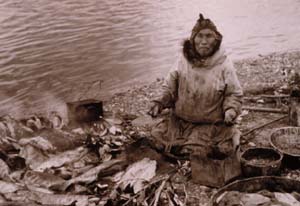 During the last big abrupt cooling, 12,900 years ago, Europe cooled down to Siberian temperatures within a decade (about ten-fold greater than in the Little Ice Age), the rainfall likely dropped by half, and fierce winter storms whipped a lot of dust into the atmosphere. Such conditions lasted for over 1,300 years, whereupon things warmed back up, even more suddenly. The dust settled and the warm rains returned, again within a decade.
During the last big abrupt cooling, 12,900 years ago, Europe cooled down to Siberian temperatures within a decade (about ten-fold greater than in the Little Ice Age), the rainfall likely dropped by half, and fierce winter storms whipped a lot of dust into the atmosphere. Such conditions lasted for over 1,300 years, whereupon things warmed back up, even more suddenly. The dust settled and the warm rains returned, again within a decade.
Oslo is anomalous, when you look around the globe for other major cities so far from the equator. In the southern hemisphere, latitude 60� is halfway between the tip of South America and Antarctica, down in the Drake Passage where strong westerly winds circle the world, stirring up prodigious wave heights. Though the long summer twilight of the higher latitudes may be nice, the flip side includes those dim winter days where the sun makes only a brief midday appearance low in the sky, barely edging the thermometer upward.
The populous parts of the United States and Canada are mostly between the latitudes of 30� and 45�, whereas the populous parts of Europe are ten to fifteen degrees farther north. �Southerly� Rome lies near the same latitude, 42�N, as �northerly� Chicago � and the most northerly major city in Asia is Beijing, near 40�N. London and Paris are close to the 49�N line that goes through Hudson Bay and, west of the Great Lakes, separates the United States from Canada. Berlin is up at 52�, Copenhagen and Moscow at about 56�. Oslo is nearly at 60�N, as are Stockholm, Helsinki, and St. Petersburg; continue due east and you�ll encounter Anchorage.
Europe�s climate, obviously, is not like that of North America or Asia at the same latitudes. For Europe to be as agriculturally productive as it is (it supports more than twice the population of the United States and Canada), all those cold, dry winds that blow eastward across the North Atlantic from Canada must somehow be warmed up. The job is done by warm water flowing north from the tropics, variously called the Gulf Stream and, when nearing Ireland, the North Atlantic Current. This warm water then flows up the Norwegian coast, with a westward branch warming Greenland�s tip, at 60�N. It keeps northern Europe about 5-10�C warmer in the winter than comparable latitudes elsewhere � except, of course, when it fails.
We lived through that. Not by controlling the large-scale environment around us, but by controlling the small-scale, immediate, environment, and adapting to the changes as they came. Not all of us lived through it, obviously, but what we are lived through it; and, less obviously, not all of us are living through this, now.
What's missing from the general picture is that the most adaptable people, the indigenous, the aboriginals, the ones who live now as we lived then, who have the skills, and the proven methods of survival, are being exterminated, by attrition or intent. The types of human being most suited, most capable, most ready for rapid whole-system change, are in the prisons of the modern world, or driven into the margins and remnants of wilderness, when they aren't being seduced by the temporary ease and comfort of modern technologies.

photos Dept. of Anthro. Brown Univ.
-
Killing The Wolf
Aldo Leopold

